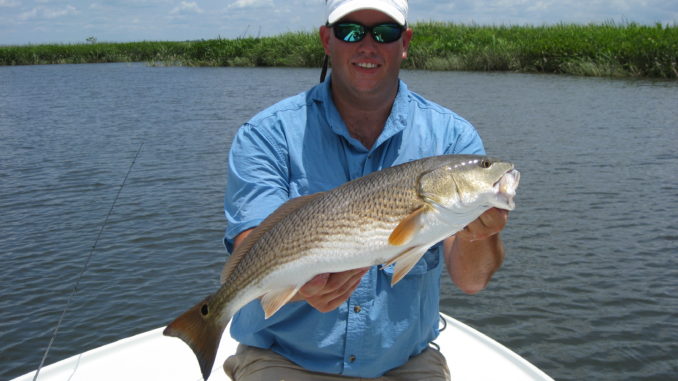
Live baits, artificials will put plenty of reds in the boat for anglers who follow a few rules.
All kinds of changes take place for redfish and the anglers target them when spring arrives in the Charleston area. The water temperatures typically hover in the 60s, making for ideal conditions to pursue reds in the shallows. Massive conglomerations of baitfish and shrimp are moving back into the estuaries, and reds are ready to fill up.
And last but not least, don’t expect to find them huddled up in huge schools in small areas like they were during the winter. They are on the move. No longer concentrating on hiding from their bottle-nosed predators, they can spend more time putting food on the table.
“During the winter, reds group up in remote areas, mostly to avoid dolphins. Since there is not a lot of food around in winter, the dolphins pressure the reds hard,” said Siwarski. “In spring, when there is bait around for dolphins to eat, they don’t pressure the reds as much, and reds will break up and move around to feed.”
The possibilities are wide open. Siwarski will fish anywhere from the SC 41 bridge over the Wando River to the ICW behind Isle of Palms and up towards Caper’s Inlet.
“Redfish are just about everywhere in spring and biting real good,” says Siwarski.
Reds are not the only thing on the move this time of year. Capt. Chris Orvin of Overdose Fishing Charters keeps his boat wet just about every day with reds in his sights.
“The baitfish and shrimp are moving back in, and the fish are happy. It’s a great time to get out there,” said Orvin. “They are breaking out of their schools. Look out for small pods of fish in groups of three to four.”
Orvin will not stray too far from the places he fishes during the winter to find a group of reds, but the fish will also be in a wide variety of other habitats, too.
“I target the backs of creeks with shell rakes and around structure near the harbor,” Orvin said.
Redfish are very structure-oriented just about any time of year. Rarely will they stray too far. The oyster and barnacle-encrusted formations keeps food and reds around for most of the year. Orvin beats the banks and concentrates on the riprap and oyster beds on the lower end of the tide.
“One hour before low and two hours of the rise is when I am hitting them really hard,” Orvin said, explaining that low-water concentrates the food into shallow pools that makes it easy to make a living.
Siwarski shares in Orvin’s low-water interests, but he will not let a spring tailing tide pass by, either.
“I will be in the grass on the flood tides,” said Siwarski. “The crabs are coming into the shallow water, and there is also a big push of females molting in spring.”
Not only are blue crabs treasured by Charleston foodies, redfish adore the sweet taste of these hard-shelled crustaceans as well, and the soft variety is considered caviar in redfish circles. Blue crabs shed their hard shells once per month on each full moon.
Soft crabs are the most-expensive bait any angler will ever purchase, but even a sleepy redfish will wake up and commit to a chunk of this soft-shelled delicacy. Anglers can cut the crabs into a half-dozen pieces and get a bite on each morsel, no matter how small.
Anglers can also catch a net full of mullet and mud minnows; live or fresh-cut bait and shrimp will tempt most redfish during the spring.
“As long as you have a decent presentation, you are going to catch fish, (so) use live shrimp if you can get them,” Orvin said. “Some shrimp will be moving back in there, and it is the No. 1 bait for both reds and speckled trout.”
Orvin rarely heads out in spring without at least a couple dozen live shrimp, when available.
“I like to rig them on a popping cork along the deeper sections in the area. Some trout will usually show up this time of year and the cork will have a presentation for both of them,” he said.
When using natural bait, Orvin prefers Calcutta’s Ultra In-Line Circle Hook Jig, which he said gets hung up on the oysters less often and allows for more-solid hookups.
Anglers equipped with a wide assortment of artificial lures, from supple soft plastics to hard-sided offerings, will present plenty of opportunities to hook up. Both Orvin and Siwarski leave the ramp well-equipped, but Siwarski reaches for a topwater plug over any other lure, especially on an early morning trip on low water.
“Reds are in an eating mode in May with topwater lures very deadly. I like a low tide at 8 a.m., and I’ll fish from sunrise until 10am,” said Siwarski, who’s first topwater selection will be a Rapala Skitterwalk in both blue and chartreuse with silver bellies. The bait’s size, shape and action is what he prefers when fishing for spring reds in spring conditions, and he’ll work the bait much more slowly than he does when targeting trout. He will cast around oyster mounds near the channel and along oyster-lined banks.
Since redfish lack accuracy when taking in a topwater lure, they quickly make up for their misses when a lonely soft-plastic jerkbait shows up in the wake of a topwater offering. Siwarski always keeps a rod rigged and ready to follow up his top water lures.
“Cast a jerk shad behind them, and they will jump all over it,” said Siwarski, who rigs his baits weedless on a 1/16- or 1/8-ounce flutter hook.
The spring fishery carries a similar tune to what most anglers can remember from the fall frenzy. With bait becoming abundant and water temperatures hovering in the comfort zone, the redfish posse stays very active. Every angler from the expert with 40 years on a casting platform to the neophyte first seeing the spartina-lined marshes should have a perfect opportunity to land a spring red.
DESTINATION INFORMATION
HOW TO GET THERE — Charleston and the waters that surround it are most-easily accessed via I-26 from inland and US 17 from up and down the coast. Prime boat landings are at Shem Creek in Mount Pleasant off I-526, Remley Point in Mount Pleasant at the foot of the US 17 bridge, Wappoo Cut off Folly Road and Limehouse Landing on the Stono River at CR 20. The Charleston City Marina off the James Island Expressway is another good access point. From these ramps, the Wando, Cooper, Stono and Ashley rivers, the harbor and the ICW toward and beyond Isle of Palms are easily accessed. Look for flats, points, or creeks abundant with oyster beds and any other types of structure. Choose deeper creeks that receive waters from large tidal flats with lots of small creeks that dry up on low tide.
WHEN TO GO — Spring redfish action cranks up when the water temperature hovers between 62 and 68 degrees — a period that can span from the last week of April through the first week of June. With the exception of flood tides, the lower half of the tide approaching low is the best time to encounter reds.
TACKLE/TECHNIQUES — The choice of natural bait is the widest it will be, with the arrival of mullet minnows, molting crabs, shrimp and menhaden in estuaries as the water warms. Reds will be super happy to hit artificials, including topwater plugs and soft plastics, the latter fished on flutter hooks or jigheads. Medium-heavy, 6 ½- to 7 ½-foot spinning outfits are preferred, with reels spooled with 17- to 20-pound braided line.
GUIDES/FISHING INFO — Capt. Tom Siwarski, Carolina Aero Marine Adventures, 843-327-3434, www.carolinaaeromarine.com; Capt. Chris Orvin, Overdose Fishing Charters, 843-509-2309, www.overdosefishingcharters.net; Haddrell’s Point Tackle Shop, Mount Pleasant, 843-881-3644; The Charleston Angler, Charleston, 843-571-3899.
ACCOMMODATIONS — Shem Creek Inn, Mount Pleasant, 800-523-4951; Charleston Area Convention & Visitors Bureau, www.charlestoncvb.com; South Carolina Association of Visitors Bureaus, www.discoversouthcarolina.com.
MAPS — Navionics, 800-848-5896, www.navionics.com; Capt. Segull’s Nautical Charts, 888-473-4855, www.captainsegullcharts.com; Sealake Fishing; Guides, 800-411-0185, www.thegoodspots.com.

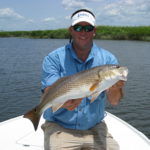
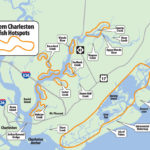
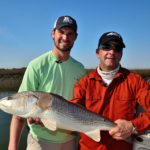
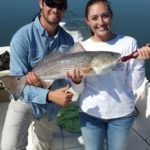



Be the first to comment